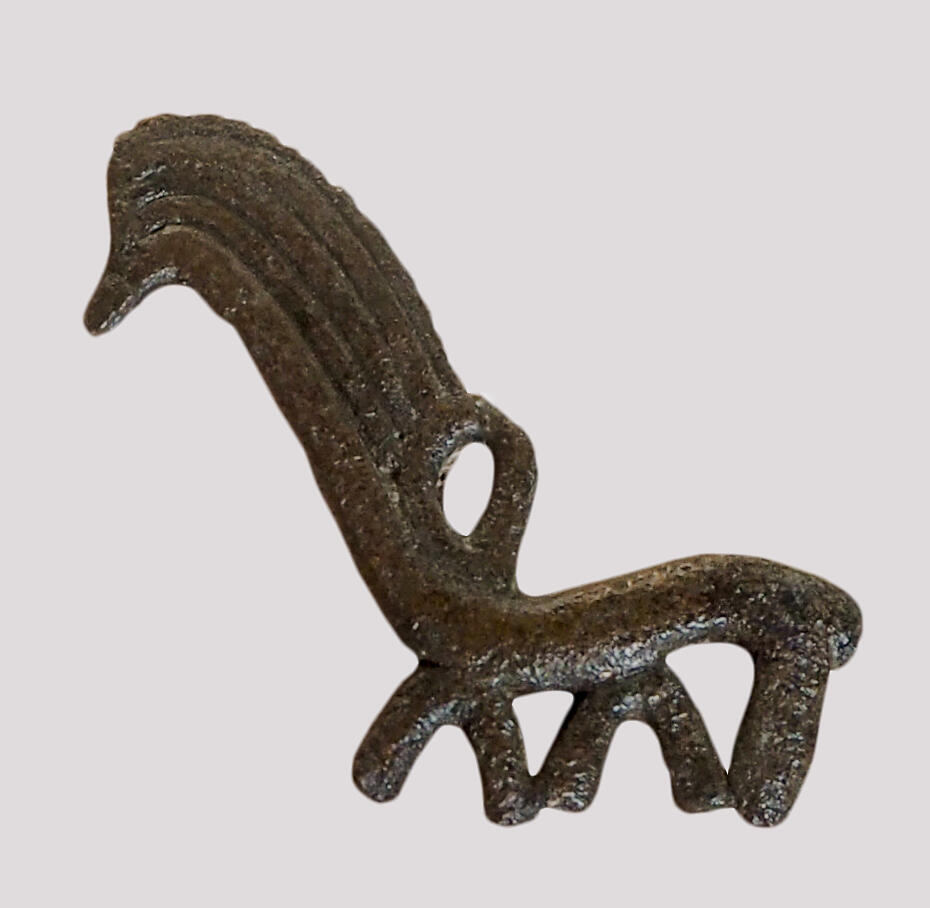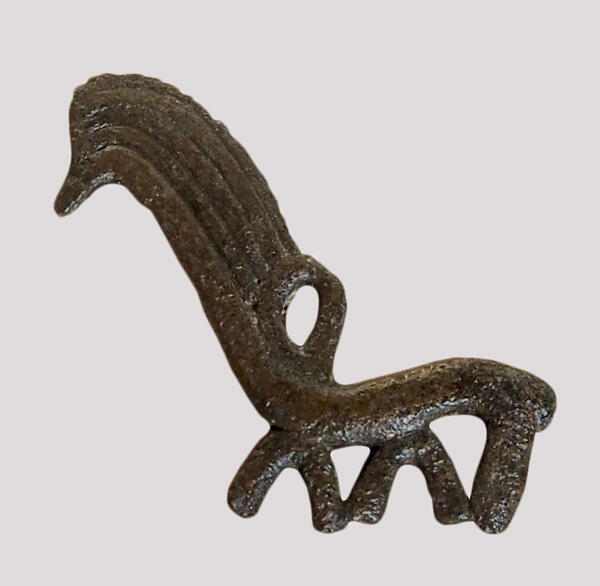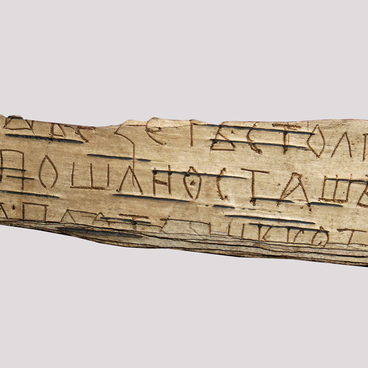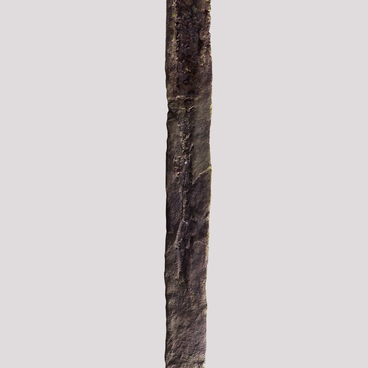In 1959, the expedition of the Smolensk archaeologist Schmidt during the excavation of the settlement near the village of Novye Bateki, Smolensk region, found a horse-shaped amulet-pendant. The item belonged to the culture of the early Iron Age — the Dnieper-Dvino tribes who inhabited the Smolensk region from the 8th century BC to the 3rd century AD.
The main type of the Dnieper-Dvintsy’s settlements were hillforts, which were built on elevated places and were well fortified. They were located, as a rule, on the banks of small rivers or streams, near the place of their confluence with larger rivers. The area of ancient settlements was usually small and amounted to about 600-1000 square meters. Each separate settlement was a place of one clan’s inhabitance, but by the 3rdcentury AD, with the growth of the population, several families began to settle in one place, and the inhabitants of two or three nearby settlements constituted a clan. Joint activities to build defensive fortifications around the village, undivided economy, the nature of residential and economic buildings — all this speaks of the preservation of communal property and democratic order in the society. The population lived in constant military danger, as evidenced by powerful defensive structures. It came from the inhabitants of neighboring settlements, as well as from foreign robbers who could enter along the rivers over long distances
Horse amulets are one of the most common sacred objects in the Upper Dnieper and Dvina region. All of them are made according to the same stylistic scheme: a clearly expressed lush horse mane and a pointed muzzle; four well-defined legs, standing apart; an ear-loop at the base of the neck and the so-called tail — the final part of the amulet, which is lowered down, which is the sexual sign of a male. The emphasized masculine principle in the horse amulets of the early Iron Age aimed at opposing the feminine principle.
According to Schmidt, the pendant amulet was a sacred token. People of that time were dominated by the deification of the forces of nature, the sun, fire, or the hearth.
The cult of the horse as a servant of the gods was widespread. The testimonies of ancient authors about sacred horses in pagan temples and rituals associated with them, their use in fortune telling, have been preserved. It is known that the cult of the horse is closely related to the cult of the sun. For early agricultural communities, the cult of the sun, providing a good harvest, made perfect sense.
Christianization led to oblivion of the value of amulets, simplification of their appearance, and then to their complete disappearance.
The main type of the Dnieper-Dvintsy’s settlements were hillforts, which were built on elevated places and were well fortified. They were located, as a rule, on the banks of small rivers or streams, near the place of their confluence with larger rivers. The area of ancient settlements was usually small and amounted to about 600-1000 square meters. Each separate settlement was a place of one clan’s inhabitance, but by the 3rdcentury AD, with the growth of the population, several families began to settle in one place, and the inhabitants of two or three nearby settlements constituted a clan. Joint activities to build defensive fortifications around the village, undivided economy, the nature of residential and economic buildings — all this speaks of the preservation of communal property and democratic order in the society. The population lived in constant military danger, as evidenced by powerful defensive structures. It came from the inhabitants of neighboring settlements, as well as from foreign robbers who could enter along the rivers over long distances
Horse amulets are one of the most common sacred objects in the Upper Dnieper and Dvina region. All of them are made according to the same stylistic scheme: a clearly expressed lush horse mane and a pointed muzzle; four well-defined legs, standing apart; an ear-loop at the base of the neck and the so-called tail — the final part of the amulet, which is lowered down, which is the sexual sign of a male. The emphasized masculine principle in the horse amulets of the early Iron Age aimed at opposing the feminine principle.
According to Schmidt, the pendant amulet was a sacred token. People of that time were dominated by the deification of the forces of nature, the sun, fire, or the hearth.
The cult of the horse as a servant of the gods was widespread. The testimonies of ancient authors about sacred horses in pagan temples and rituals associated with them, their use in fortune telling, have been preserved. It is known that the cult of the horse is closely related to the cult of the sun. For early agricultural communities, the cult of the sun, providing a good harvest, made perfect sense.
Christianization led to oblivion of the value of amulets, simplification of their appearance, and then to their complete disappearance.



